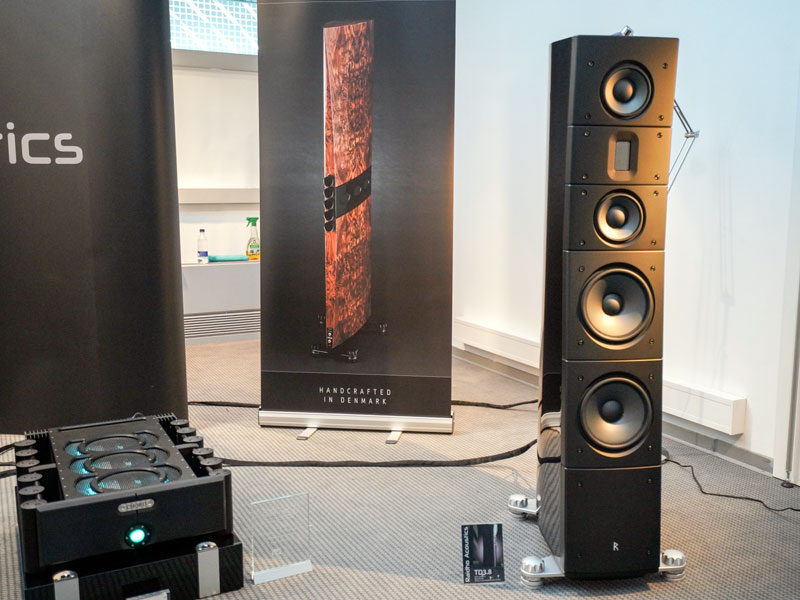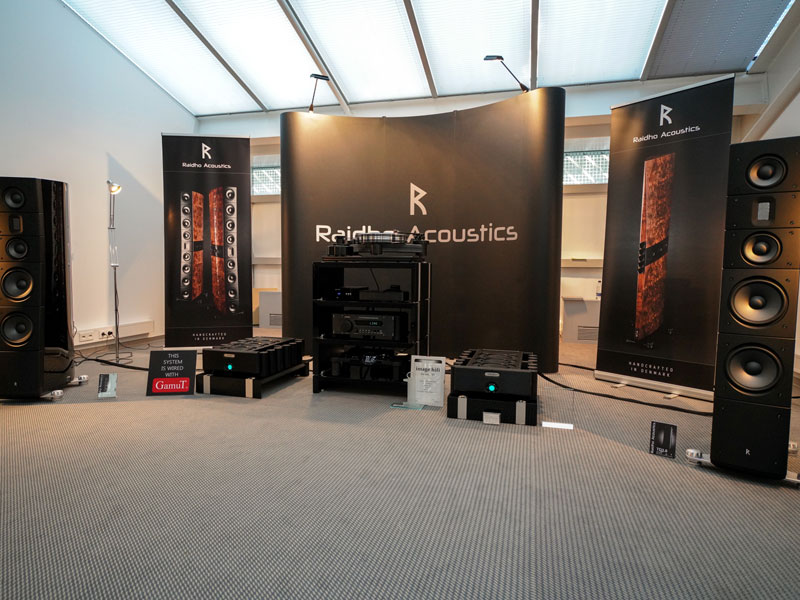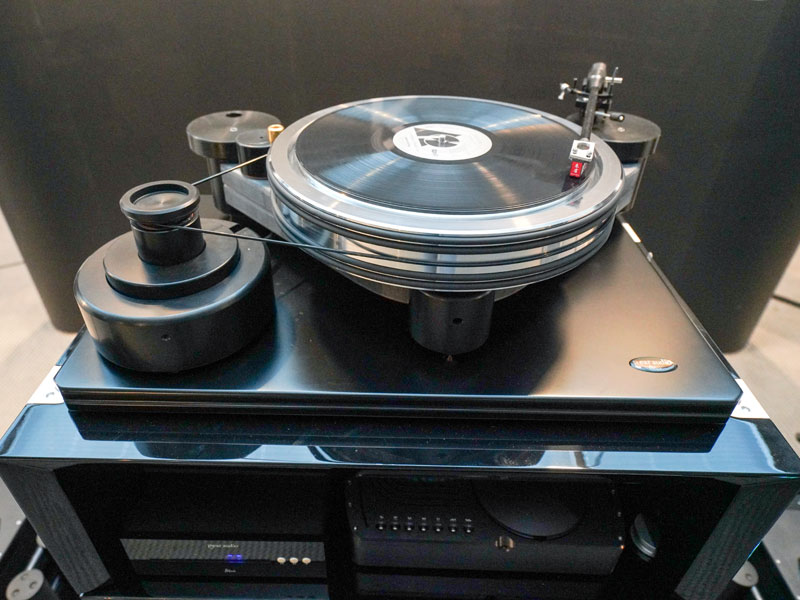High End 2019 • TABlog
s promised, Raidho showed up in Munich with its first fully Benno Baun Meldegaard-designed loudspeaker. Whereas models such as the TD4.2 and TD1.2 were based on previous designs, updated with newer technology and reworked and improved crossovers, the TD3.8 (from €88,000 per pair, depending on finish) is a clean-sheet design with all-new drivers, a different topology, an entirely new cabinet featuring revised proportions and an evolved aesthetic.
No one looking at this speaker could mistake it for anything but a Raidho product, but it’s also like no Raidho you’ve ever seen. Visually and sonically, the cabinet is anchored by a pair of 200mm/8” drivers (an unheard-of arrangement in a Raidho speaker that stands only 1420mm/56” tall) with an MTM array above them. Gone are the slender proportions and mirror-imaged baffles of previous high-end Raidhos, replaced by a squatter, more powerful-looking speaker that sits squarely on its four outrigger feet. If looks alone are anything to go by, the TD3.8 is an elegant stylist and also a real bruiser.
That powerful visual impression is not wholly misleading. As described in my recent visit to Raidho, the entire basket and motor assemblies of the midrange and bass drivers have been totally revised, while the efficiency and power handling of the familiar tweeter has also been improved. The result is a paper performance for the TD3.8 that features a -3dB point at 23Hz and a system sensitivity of 91dB -- both figures that seem much more realistic than some previous, rather optimistic Raidho specs. Listen and the benefits are immediately apparent, the speakers projecting greater presence, substance, color and dynamic density. Driven by a complete suite of Chord source equipment and amplification -- CPA-5000 preamp ($17,900) Ultima 2 monoblocks ($41,000 per pair) Blu Mk II transport ($10,500) and Dave DAC ($11,500) -- the TD3.8s portrayed the Gravity soundtrack as massive, massively dynamic and possessing massive headroom. The constantly shifting patterns and density in the score were effortlessly handled, while the subtle bleeps and electronic ticks the litter the soundstage were discrete and clearly audible -- an impressive performance from a relatively compact floorstander.
The rest of the system featured a Pear Audio Blue Odar record player ($15,000) mounting the blindingly quick Topwing Red Sparrow cartridge ($16,000), played through the Chord Symphonic phono stage ($4495). Cabling was with Gamut Reference (starting at €3895 for a power cord and rising to €5650 for three-meter speaker cables). Switching to the record player really showed what the speakers could do, bringing even greater substance and impact to the sound. As is so often the case with show systems, the equipment
choices rest on strategic thinking or alliances, rather than sonic criteria. The Chord
electronics might not be the best or indeed my choice of partnering equipment, but if the
performance of this system is anything to go by, then there’s enormous untapped
potential lurking in the TD3.8. It’s almost as if Dantax sent the Raidho speaker line
to finishing school, and it has come back newly polished and all grown up. This latest
Raidho follows the company’s recent trend in delivering real substance and bandwidth
from its larger models -- something that it struggled with previously -- and if the TD3.8
is anything to go by, the Danish mavericks might be just about to get all respectable on
us, finally delivering on the exceptional promise their striking designs have always
displayed. More balanced, more musically accomplished, more dynamic and with much greater
musical impact, the TD3.8 even manages to be more attractive than its brethren. Now that’s
progress. |



